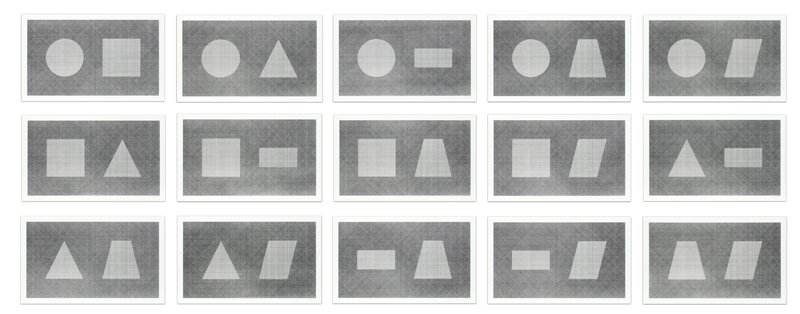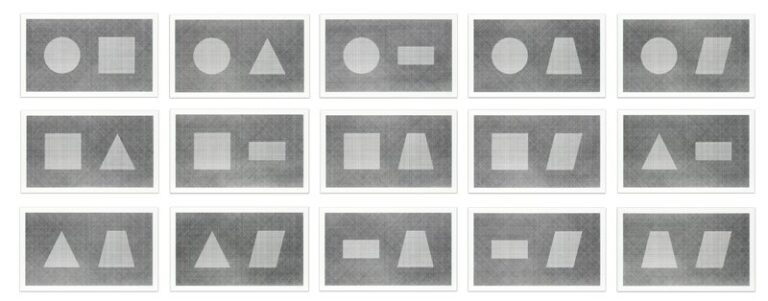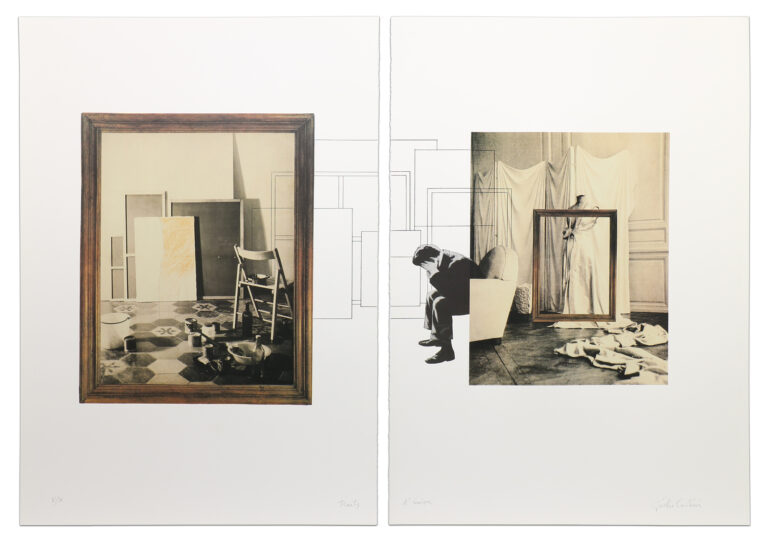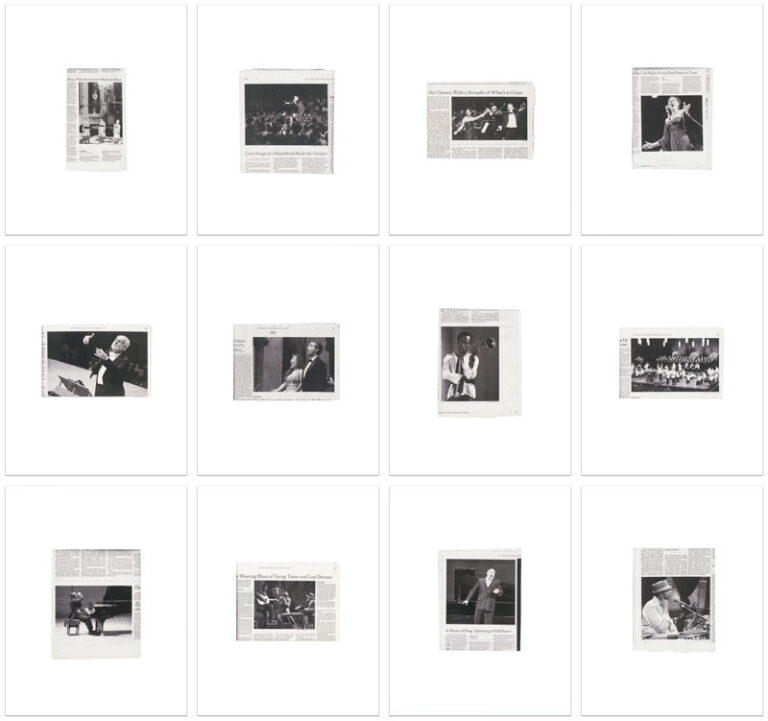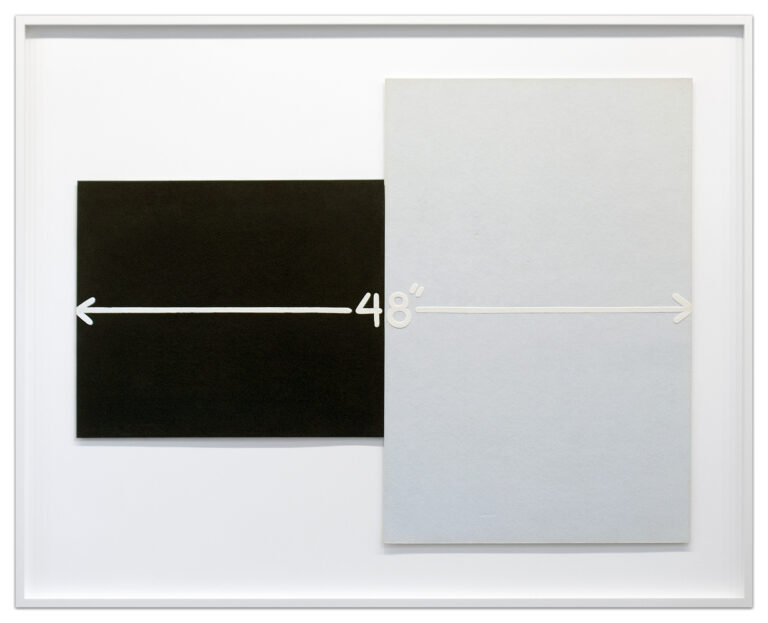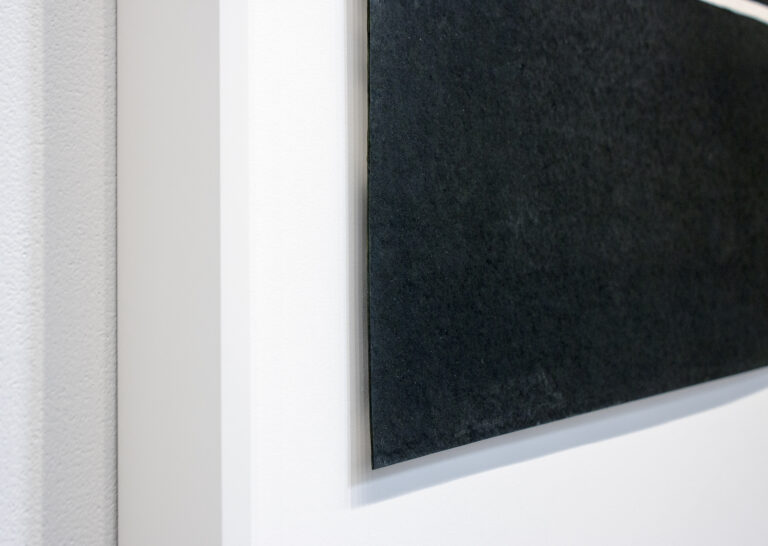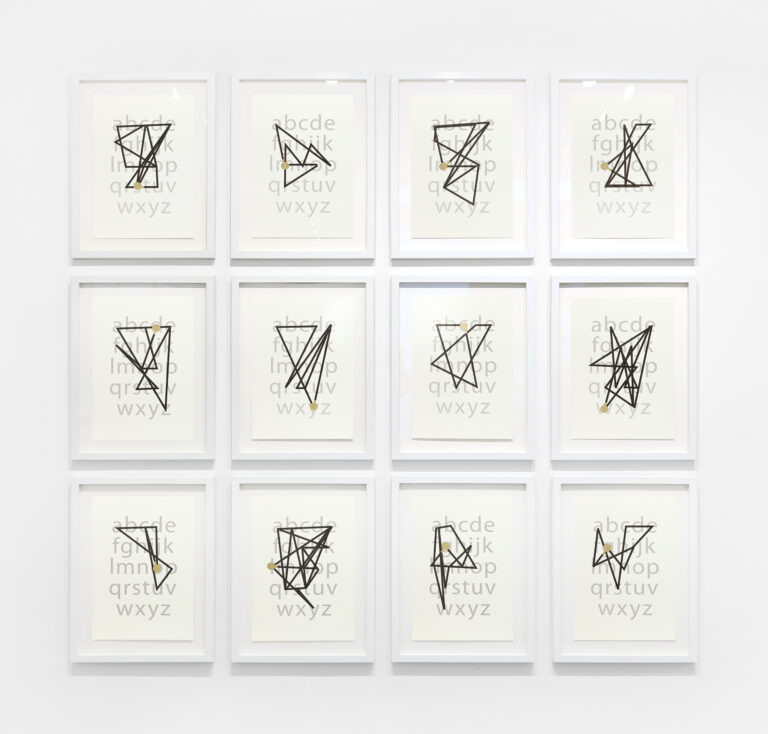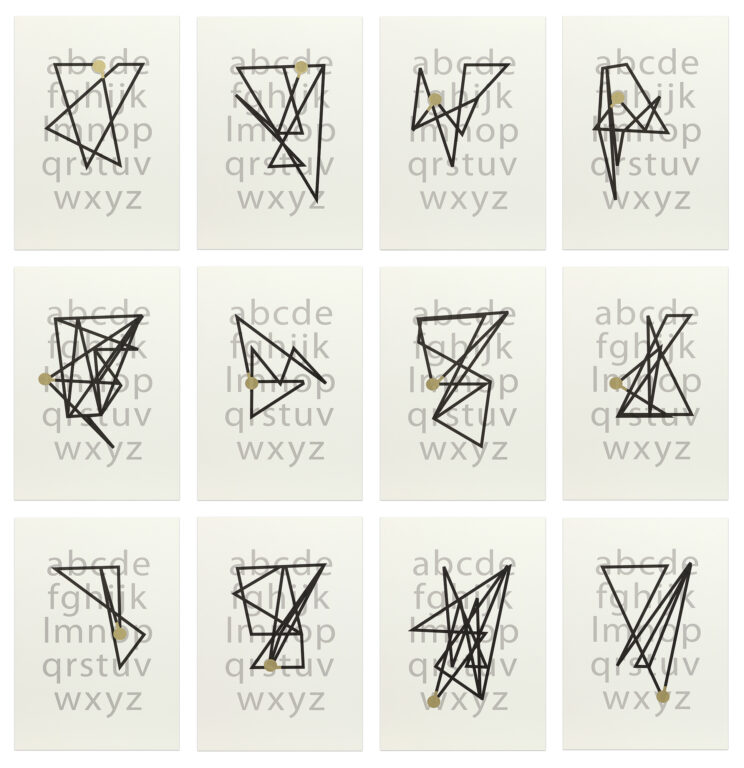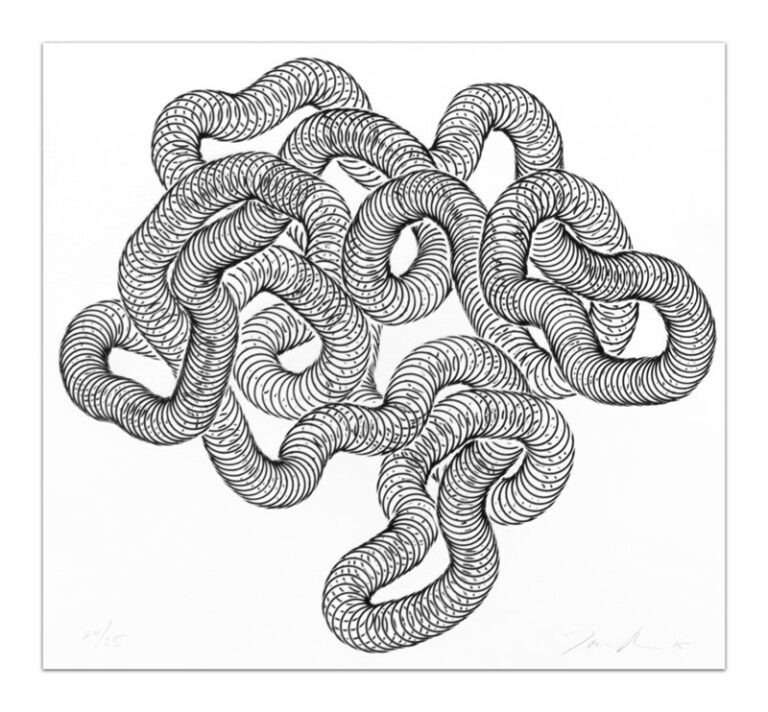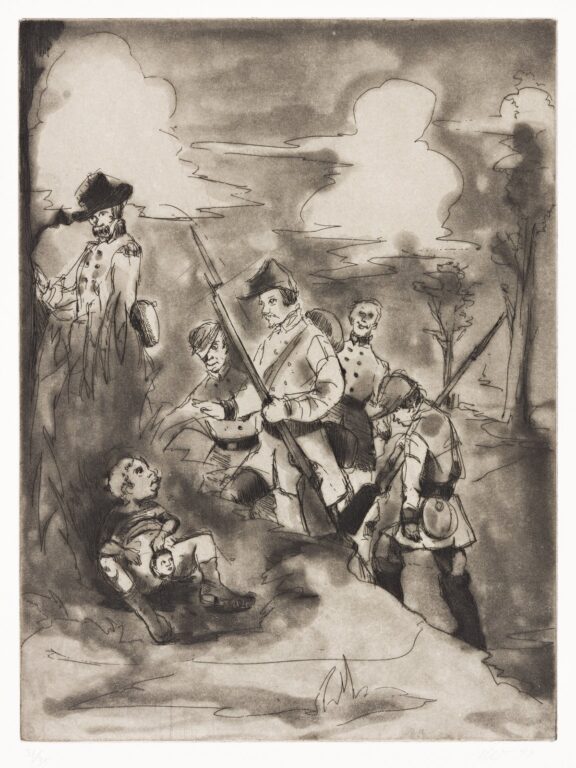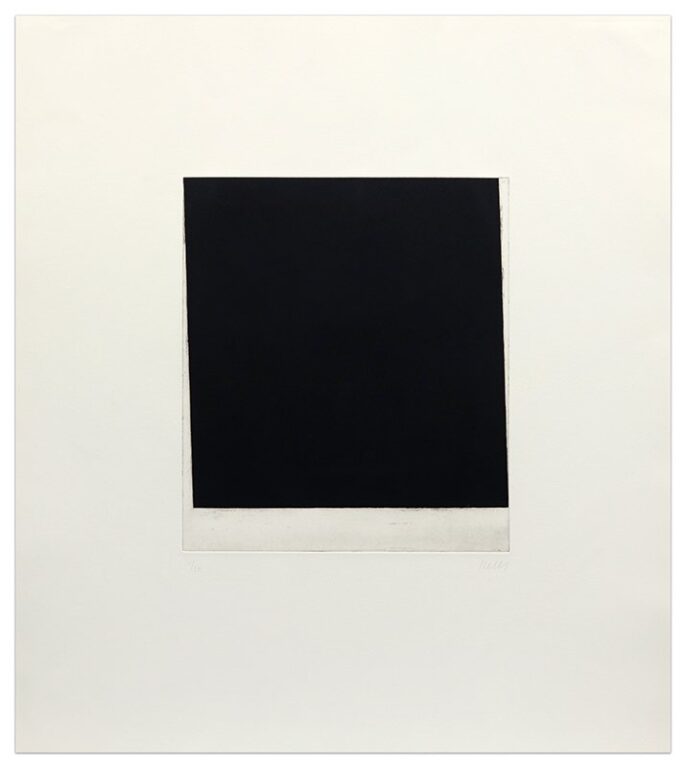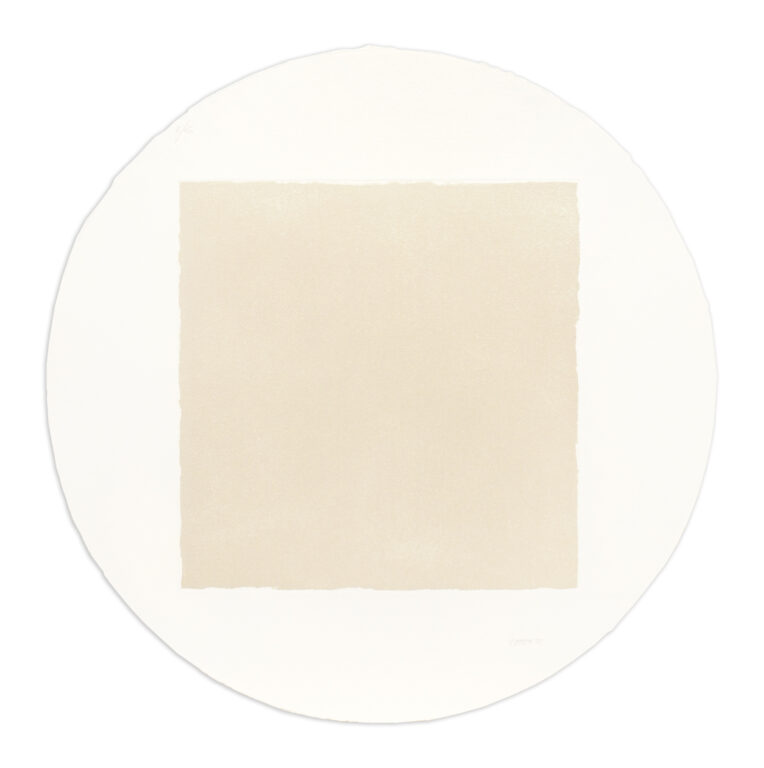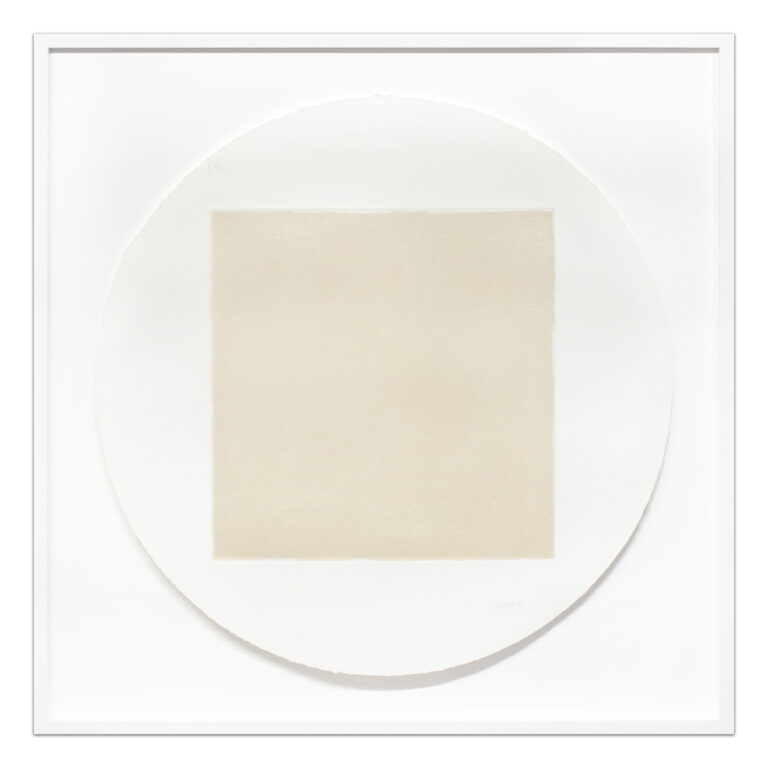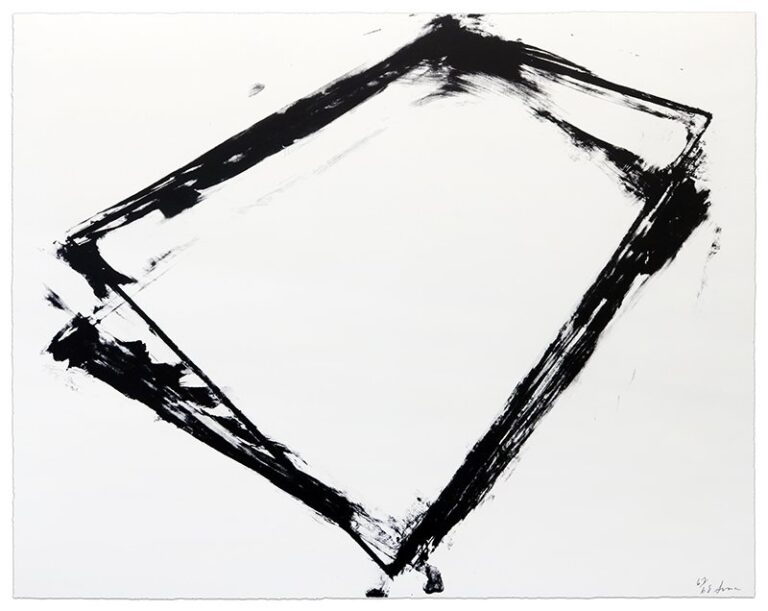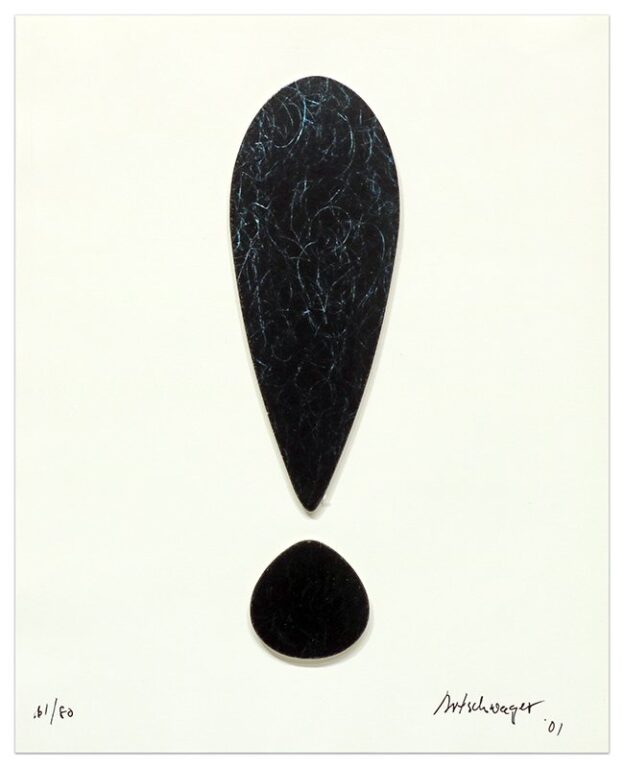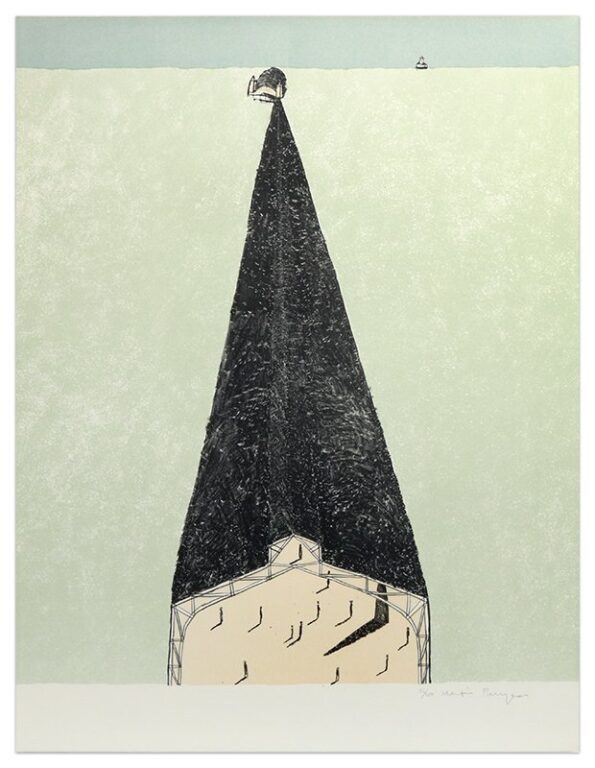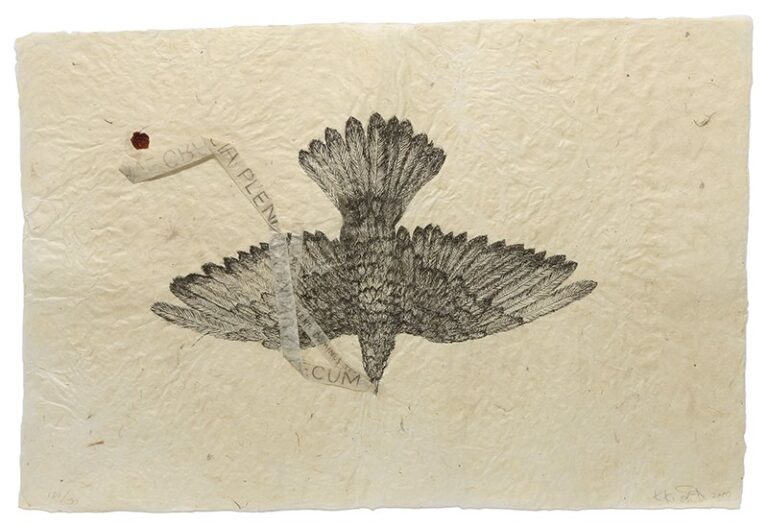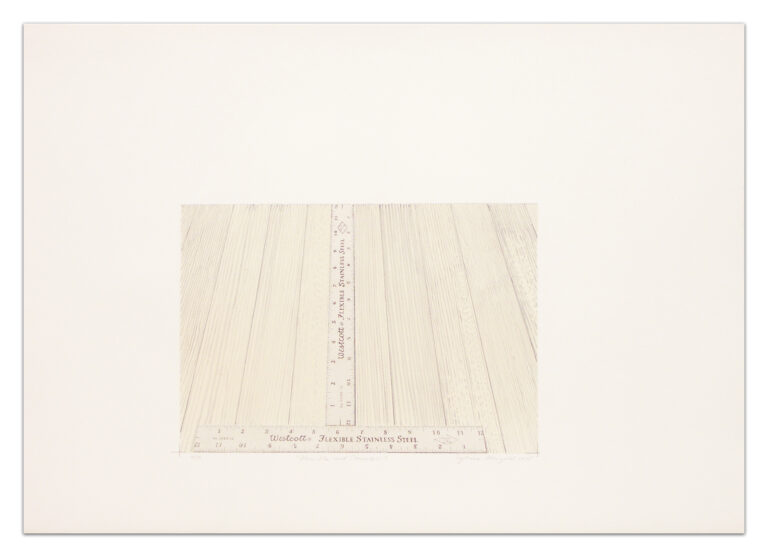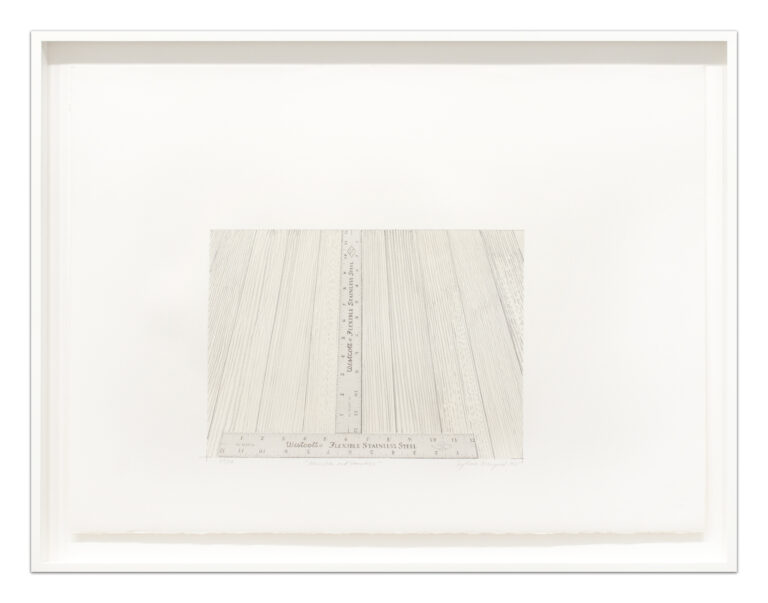Six Geometric Figures & All Their Combinations (in pairs)
1980
Set of fifteen black and white silkscreen prints
Edition of 10, plus 5 AP, 10 TP
Image size: 10 x 17 1/2 inches each (25.4 x 44.5 cm each)
Paper size: 11 1/2 x 19 inches each (29.2 x 48.3 cm each)
Signed lower right on each sheet
(Inventory #29126)
Krakow 1980.02.07 – Krakow 1980.02.21
Sol LeWitt
Six Geometric Figures & All Their Combinations (in pairs)
1980
Set of fifteen black and white silkscreen prints
Edition of 10, plus 5 AP, 10 TP
Image size: 10 x 17 1/2 inches each (25.4 x 44.5 cm each)
Paper size: 11 1/2 x 19 inches each (29.2 x 48.3 cm each)
Signed lower right on each sheet
(Inventory #29126)
Krakow 1980.02.07 – Krakow 1980.02.21
